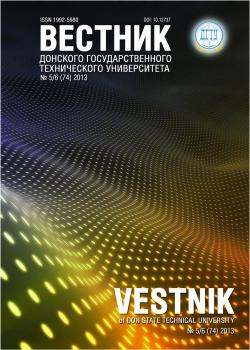T he work objective is to study the surface notch impact on the liability of the heat affected zone (HAZ) of welded joints of the heat-resistant high-alloy steels to brittle intergranular fracture. The theoretical justification is presented, and experiments that demonstrate the mechanism of this effect are described. The impact of the notch acuity of Charpy- and Mesnager-type on the welds life of 12H18N12T, 07H18N9 03H16N9M2 steel at high-temperature (T = 823K) low-frequency low-cycle loading simulating the conditions of a non-stationary operation mode of the equipment and pipelines of the nuclear power plants with fast-neutron reactors is investigated. It is found that the welds of the steels under study exhibit different notch sensitivity depending on the plastic properties and liability to the HAZ metal dispersion hardening. As a result of the work, the significance of the high ductility of the austenite grains free from the second- phase dispersed precipitates reinforcing matrix is shown by experiments. The high resistance of the metal of the HAZ of 03H16N9M2 low-carbon steel from the intergranular fracture is due to this factor. The findings lead to the following conclusion: ―minor‖ surface notches – technological defects such as notch groove, lack of fusion, tear – are unacceptable when operating with welded joints of heat-resistant steels under the high-temperature low-frequency low-cycle loading.
welded joints, heat affected zone, notch, mechanism of intergranular fracture, factors of destruction
Введение. В реальных условиях эксплуатации даже пластичные конструкционные материалы разрушаются хрупко.
Это происходит, в первую очередь, из-за наличия различных концентраторов напряжений — механических надрезовповерхностных и внутренних технологических дефектов, резких переходов от толстого к более тонкому сечению и
др. [1, 2]. Поэтому в описываемом случае конструкционная прочность может оказаться ниже, чем определенная мето-
дом обычных испытаний «гладких» образцов. Более того, влияние надреза на поведение материала неоднозначно. Так,
квазистатическая и статическая прочность при наличии надреза в общем случае возрастает, а длительная статическая
прочность и усталостная прочность (предел выносливости) надрезанных образцов в той или иной степени понижают-
ся [3]. В этой связи необходимо проведение экспериментального исследования для оценки чувствительности сварных
соединений к надрезу в условиях сложного низкочастотного малоциклового нагружения (НМН).
Цель работы: получить новые экспериментальные данные по влиянию остроты поверхностных надрезов на склон-
ность к межзеренному локальному разрушению (ЛР) металла зоны термического влияния (ЗТВ) сварных соединений в
условиях НМН, имитирующих нестационарный режим работы энергетического оборудования и трубопроводов при
температуре выше 773 К.
1. Ignatov, V.А., Karzov, G.P. Otsenka vliyaniya tekhnologicheskikh defektov na prochnost´ elementov svarnykh konstruktsiy pri malotsiklovom nagruzhenii. [Assessment of the impact of technological defects on the strength of the elements of welded structures under low-cycle loading.] Svarochnoe Proizvodstvo, 1974, no. 10, pp. 20-23 (in Russian).
2. Lukyanov, V.F., Assaulenko, S.S. Analiz prichin razrusheniya metallicheskikh konstruktsiy opornogo uzla strelovogo krana.[Failure analysis of boom seat metal structures.] Vestnik of DSTU, 2014, vol. 14, no. 4 (79), pp. 186-193 (in Russian).
3. Dal, V., ed. Povedenie stali pri tsiklicheskikh nagruzkakh. [The behavior of steel under cyclic loading.] Moscow: Metallurgiya, 1982, 568 p. (in Russian).
4. Poletaev, Yu.V. Vliyanie khimicheskoy mikroneodnorodnosti na sklonnost´ k lokal´nomu razrusheniyu metalla ZTV svarnykh soedineniy. [Influence of chemical microheterogeneity on tendency to the local destruction of metal in the heat affected zone (HAZ) of welded joints.] Svarochnoe Proizvodstvo, 2012, no. 3, pp. 10-13 (in Russian).
5. Peterson, R. Koeffitsienty kontsentratsii napryazheniy. [Stress concentration factors.] Moscow: Mir, 1977, 302 p. (in Russian).
6. Yelizarov, D.P. Paroprovody teplovykh elektrostantsiy (perekhodnye rezhimy i nekotorye voprosy ekspluatatsii). [Steam pipelines of thermal power stations (transient modes and some operational issues).] Moscow: Energiya, 1980, 264 p. (in Russian).
7. Poletaev, Yu. V. Dlitel´naya malotsiklovaya prochnost´ svarnykh soedineniy i vybor austenitno-stabil´nykh staley. [Long-term low-cycle strength of welded joints and selection of stable austenitic steels.] Novocherkassk: LIK, 2010, 281 p. (in Russian).
8. Pisarenko, G.S., Mozharovskiy, N.S. Uravneniya i kraevye zadachi teorii plastichnosti i polzuchesti. [Equations and boundary value problems of the theory of plasticity and creep.] Kiev: Naukova dumka, 1981, 496 p. (in Russian).
9. Poletaev, Yu. V. Evolution of welded joint crack resistance in the conditions of low-cyclic. Welding International, 1987, no. 3, pp. 211-213.
10. Nissley, N.-E., Lippold, J.-C. Development of the strain-to-fracture test for evaluating ductility-dip cracking in austenitic alloys. Welding Journal, 2003, vol. 82, no. 12, pp. 355-364.
11. Brooks, J.-A., Robino, C.-V., Headley, T.-J., Michael, J.R. Weld solidification and cracking behavior of freemachining stainless steel. Welding Journal, 2003, no. 2 (3), pp. 51-64.





